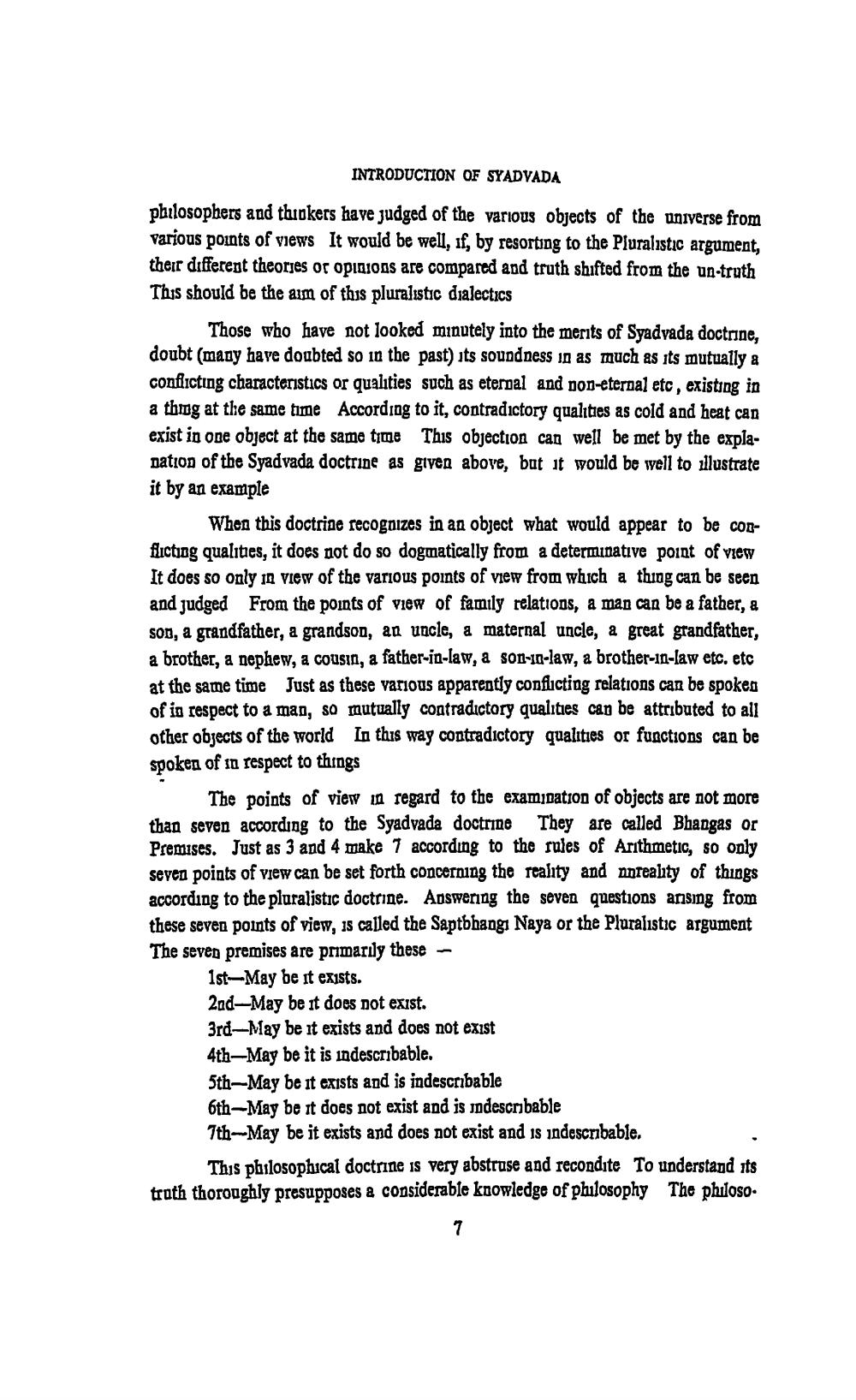________________
INTRODUCTION OF SYADYADA
philosophers and thinkers have judged of the various objects of the universe from various points of views It would be well, if, by resorting to the Pluralistic argument, their different theories or opinions are compared and truth shifted from the un-truth This should be the aim of this pluralistic dialectics
Those who have not looked minutely into the merits of Syadvada doctrine, doubt (many have doubted so in the past) its soundness in as much as its mutually a conflicting characteristics or qualities such as eternal and non-eternal etc, existing in a thing at the same time According to it, contradictory qualities as cold and heat can exist in one object at the same time This objection can well be met by the explanation of the Syadvada doctrine as given above, but it would be well to illustrate it by an example
When this doctrine recognizes in an object what would appear to be conflicting qualities, it does not do so dogmatically from a determinative point of view It does so only in view of the various points of view from which a thing can be seen and judged From the points of view of family relations, a man can be a father, & sob, a grandfather, a grandson, an uncle, a maternal uncle, a great grandfather, a brother, a nephew, a cousin, a father-in-law, a son-in-law, a brother-in-law etc. etc at the same time Just as these various apparently conflicting relations can be spoken of in respect to a man, so mutually contradictory qualities can be attributed to all other objects of the world In this way contradictory qualities or functions can be spoken of 10 respect to things
The points of view in regard to the examination of objects are not more than seven according to the Syadvada doctrine They are called Bhangas or Premises. Just as 3 and 4 make 7 according to the rules of Arithmetic, so only seven points of view can be set forth concerning the reality and anreality of things according to the pluralistic doctrine. Answering the seven questions ansing from these seven points of view, is called the Saptbhangi Naya or the Pluralistic argument The seven premises are primarily these
1st-May be it exists. 2ad-May be it does not exist. 3rd–May be it exists and does not exist 4th-May be it is indescribable. 5th-May be it exists and is indescribable 6th-May be it does not exist and is indescribable 7th May be it exists and does not exist and is indescribable.
This philosophical doctrine is very abstruse and recondite To understand its truth thoroughly presupposes a considerable knowledge of philosophy The philoso.




